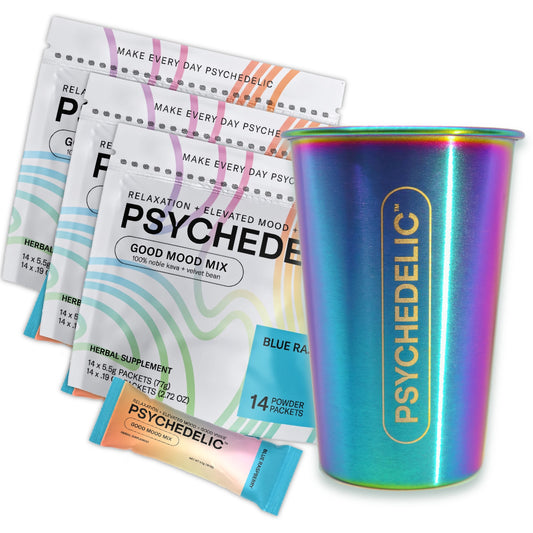Learn Everything About Golden Psycho That You’ve Wanted to Know.
Learn Everything About Golden Psycho That You’ve Wanted to Know.
Blog Article
Everything About Psychotomimetic Substances: Their Function in Psychological Research
Psychotomimetic compounds, such as LSD and psilocybin, have actually amassed enhancing rate of interest in psychological study for their capability to reproduce psychotic signs and supply understanding right into different mental health conditions. Their communications within the mind, particularly through serotonin and dopamine pathways, recommend a complex connection in between awareness and neurobiology that might unlock unique restorative avenues. As scientists remain to explore their prospective applications, honest considerations bordering their usage in medical setups become extremely important, raising vital questions concerning safety and security and notified permission that warrant additional exploration.
Meaning of Psychotomimetic Substances
In the world of emotional research study, psychotomimetic compounds are compounds that can generate impacts appearing like those of psychosis, such as hallucinations, misconceptions, and altered perceptions of truth - About Golden Psycho. These compounds can be classified into different classifications, consisting of hallucinogens, dissociatives, and particular stimulants, each creating distinct mental impacts
The medicinal action of psychotomimetic substances typically involves inflection of neurotransmitter systems, specifically those pertaining to serotonin, dopamine, and glutamate. Substances like lysergic acid diethylamide (LSD) largely act on serotonin receptors, leading to extensive alterations in sensory assumption and cognition.
The energy of psychotomimetics in research study lies in their capacity to imitate psychotic signs and symptoms, providing a design for recognizing the hidden systems of psychotic disorders such as schizophrenia. By researching the impacts of these compounds, scientists can gain understandings right into the neurobiological and emotional processes that contribute to psychosis.
Furthermore, psychotomimetic compounds have been explored for their restorative capacity in treating different psychological health and wellness problems, including depression and anxiousness, highlighting their double function in both research and prospective clinical applications.
Historical Growth and Context
The exploration of psychotomimetic compounds has a rich historic context that dates back to ancient worlds, where compounds such as psilocybin mushrooms and peyote were used in spiritual and recovery practices. These very early uses typically linked with religious rituals, recommending a profound respect for the transformed states of consciousness caused by these substances.
The mid-20th century noted a significant juncture in the research of psychotomimetic compounds, especially with the synthesis of LSD by Albert Hofmann in 1938. The subsequent popularization of LSD in the 1960s militarized a wave of interest in both its psychological effects and possible therapeutic applications. Scientists started to investigate just how these compounds might simulate psychotic states, offering understandings right into psychological disease.
Nevertheless, the boosting organization of psychotomimetics with counterculture movements resulted in regulatory reaction, finishing in the criminalization of most of these substances. Regardless of these difficulties, the resurgence of rate of interest in the restorative potential of psychedelics in the 21st century has actually motivated renewed study. This historical trajectory emphasizes the progressing perception of psychotomimetic substances, changing from spiritual substances to topics of clinical questions and, potentially, restorative pledge.
Mechanisms of Action
Understanding the devices of activity of psychotomimetic compounds exposes the detailed ways these compounds engage with the mind's neurochemistry. These compounds mostly exert their results with modulation of neurotransmitter systems, particularly serotonin, dopamine, and glutamate.
In addition to serotonin, dopaminergic paths are substantially affected by substances like mescaline important source and particular cannabinoids, which can cause transformed states of awareness and adjustments in mood and motivation. The NMDA receptor antagonism observed with compounds like ketamine highlights an additional path through which psychotomimetics might cause dissociative states and extensive modifications in believed procedures.
The neurochemical cascades navigate to this site started by these communications lead to complicated and multifaceted psychological results. Recognizing these systems is vital for both the advancement of psychological study and the therapeutic possibility of psychotomimetic substances, as they provide insights into the underlying neural correlates of transformed states of consciousness.
Current Research and Applications
Recent investigations into psychotomimetic substances have actually disclosed a renewal of rate of interest in their therapeutic applications, especially in the fields of psychiatry and psychology. Scientists have actually started checking out substances such as psilocybin, LSD, and ayahuasca for their prospective to reduce signs and symptoms connected with various mental health conditions, consisting of clinical depression, anxiousness, and PTSD.
Scientific tests have actually demonstrated that, when provided in regulated environments, these compounds can promote extensive psychological experiences, advertising psychological developments and boosted therapeutic outcomes. Researches have actually shown that psilocybin-assisted therapy can lead to considerable decreases in treatment-resistant anxiety, with results lasting for several months post-treatment.
Moreover, psychotomimetic compounds are being reviewed for their capacity to promote neuroplasticity, potentially permitting even more reliable rewiring of maladaptive thought patterns. These findings recommend that such compounds might work as complements to standard psychotherapeutic techniques, boosting the effectiveness of therapeutic treatments.
As research study advances, the focus is shifting in the direction of comprehending the ideal does, healing setups, and participant qualities that can make best use of the benefits of these substances. This expanding area holds pledge for revolutionizing my company psychological health treatment standards and addressing the constraints of traditional psychiatric medications.
Ethical Factors To Consider in Research

Browsing the moral landscape of research entailing psychotomimetic substances is critical to making sure individual security and the stability of research study results. Researchers must focus on informed permission, guaranteeing that individuals fully understand the prospective risks and advantages related to the substances being researched. This includes offering in-depth information concerning possible psychological impacts, including severe and long-lasting effects, and enabling individuals the chance to withdraw from the research at any type of time scot-free.
IRBs examine research protocols to safeguard participant welfare and maintain honest standards. In addition, the potential for browbeating need to be carefully assessed, specifically when prone populaces are involved.
Privacy is an additional extremely important consideration. Researchers must apply robust measures to shield participants' identifications and information, specifically provided the sensitive nature of experiences related to psychotomimetic compounds (About Golden Psycho). Inevitably, a commitment to honest practices not just promotes trust fund in between scientists and individuals but additionally improves the reliability and validity of the research end results, contributing to the innovation of mental knowledge

Conclusion
Finally, psychotomimetic substances, particularly timeless psychedelics such as LSD and psilocybin, offer considerable understandings into psychological problems with their unique mechanisms of activity. Their healing possibility in resolving conditions like anxiousness and PTSD highlights the importance of ongoing research study in this field. Nonetheless, ensuring moral requirements in research study practices is crucial for individual security and notified approval, enabling an accountable exploration of these substances' benefits and implications within mental scientific research.
Report this page